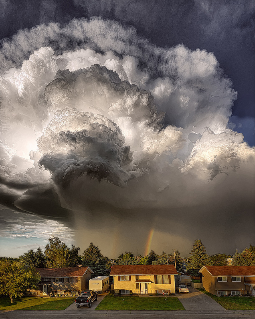 Back in 2007 Oregon science teacher Greg Craven posted a video on YouTube called "The Most Terrifying Video You'll Ever See" weighing the pros and cons of taking climate change seriously by asking "what's the worst that could happen?"
Back in 2007 Oregon science teacher Greg Craven posted a video on YouTube called "The Most Terrifying Video You'll Ever See" weighing the pros and cons of taking climate change seriously by asking "what's the worst that could happen?"
His conclusion: it we don't take the possibility seriously and prepare, it could be catastrophic, and thus worth our attention.
The video went viral, with over six million views, and it continues to have legs. Upworthy just reposted it as One Guy With A Marker Just Made The Global Warming Debate Completely Obsolete.
Craven, has since produced many hours more of videos on the topic and published a book "What's the Worst That Could Happen?", which retired Marine Corps General Anthony Zinni described as "a brilliant and unique work on global warming." When we contacted Craven a year ago, he was taking some well deserved time off because his labor of love—teaching about climate change—had become a major energy sink.
Climate scientists and activists have long been critcized as "alarmist" by supposedly exaggerating how bad climate change could really get. But a new paper in Nature with the scintillating title "Spread in model climate sensitivity traced to atmospheric convective mixing" suggests that atmospheric models have substantially underestimated the heating that will occur. In an editorial, the Washington Post summarized the new findings:
The research relies on insights into the effects of clouds on climate. In finely tuned climate models, much depends on figuring out how evaporated water behaves. As high-level clouds, some will exert a net warming effect by absorbing heat. As low-level clouds, some will exert a net cooling effect by reflecting sunlight back into space. And even lower to the ground, some may prevent low-level clouds from developing by dehydrating the cloud-forming layer. One way or another, cloud activity will feed back into the climate-change process.
The study’s authors compared various models to real-world observations and found that the models that matched the observations predict more upward pressure on temperature. Their results offer one more argument against assuming a relatively benign climate future.
As the science evolves and picture of "the worst" changes with it, one old adage is still relevant: "better safe than sorry."
The National Research Council's recently released report Abrupt Impacts of Climate Change weighs the bad news—coral reefs appear to be dying off, Arctic sea ice is thin and prone to massive meltdowns—with the good. For example, in the coming century, it looks like the massive Greenland icesheet won't suddenly collapse into the ocean, and the ocean current in the North Atlantic appears to be relatively stable.
Balancing "good news" versus "bad news" is always a challenge, especially in educational settings, where teaching about climate and global change can overwhelm learners and educators. But one thing is clear, despite claims that climate literacy is inherently political and therefore should be avoided in public schools, the essentials should be taught and taught well.
When it comes to extreme climate events, having a backup plan is a must. If we can't avoid the worst, we'd better prepare for it.
Photo courtesy of Pat Kavanaugh on Flickr
